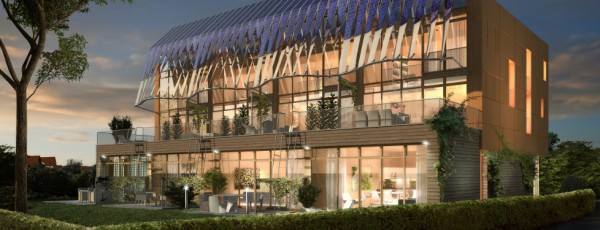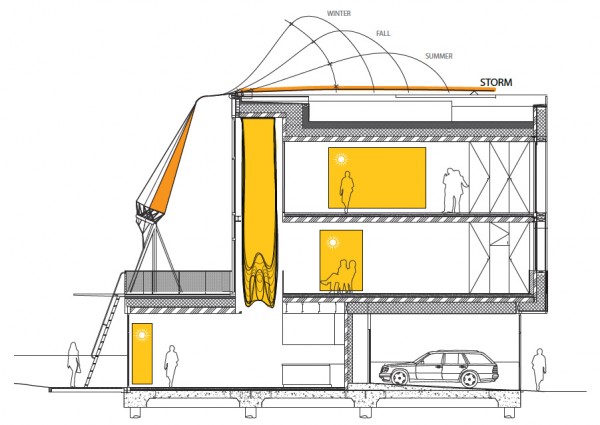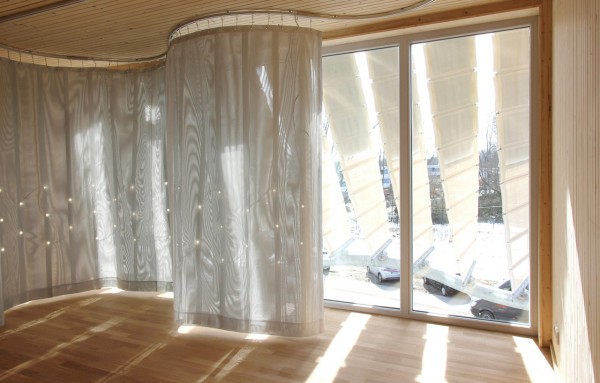A “Soft House” just completed in Hamburg, Germany, dramatically stakes its claim at the cutting edge of green building concepts. While it meets passive house standards, its distinction is that many of its parts respond actively to efficiently meet the different energy demands of different seasons and weather.
The main active ingredient is the large, twisted, vertical louvers (“twisters”) on the second and third stories of the south facade. Controlled by sensors responding to light and temperature, they twist to admit more or less sunlight into the house. Thin-film photovoltaics cover their PVC fabric surfaces, so the twisting is supposed to maximize solar power at the same time, or at least to find an optimum compromise among electric generation, solar heat gain or shading, while permitting a filtered view out onto the park.

The building comprises four live/work row houses. Each holds 1,722 square feet plus 570 square feet on the ground floor that can be either a studio apartment of a professional office. Two architecture firms—360+ Architekten of Hamburg and KVA Matx of Boston—partnered as primary designers. The Soft House will open to the public as part of a grand exhibition, the International BauAustellung (IBA).
Between the rooms and the twisters is a three-story indoor “convection atrium” that “further insulates the dwellings from extremes in temperature.” Billows of fabric can descend from the top of this chamber. In addition, a fabric canopy over the roof puffs up and down with the seasons. You can watch a cartoon of the twisters twisting and the roof fabric billowing.

Inside, sheer floor-to-ceiling curtains spangled with tiny LEDs run on sinuous tracks that curl around through the rooms on each story. The architects suggest that these create a “visual breeze” and also allow occupants to reconfigure their living spaces into microclimatic and privacy zones.

The curtains sound like an interesting design feature but not an energy-saving breakthrough, except in one regard: while LEDs may be the direction we need to go in, for lighting, our acceptance of them is hindered by our compulsion to agglomerate them into familiar-looking bulbs that we can screw into sockets and put lampshades over. I’m glad someone is thinking up new ways to use them in their original form, as little points that collectively provide ambient light.
On a different front, the architects throw their chips in with the lumber-equals-carbon-sequestration camp. To back that equation up they use old-fashioned wooden dowels to assemble their copious board-footage of FSC-certified spruce, so that the building can be taken apart some day and its wood reassembled in other buildings.